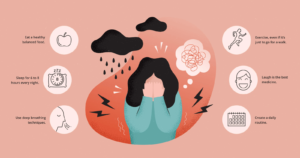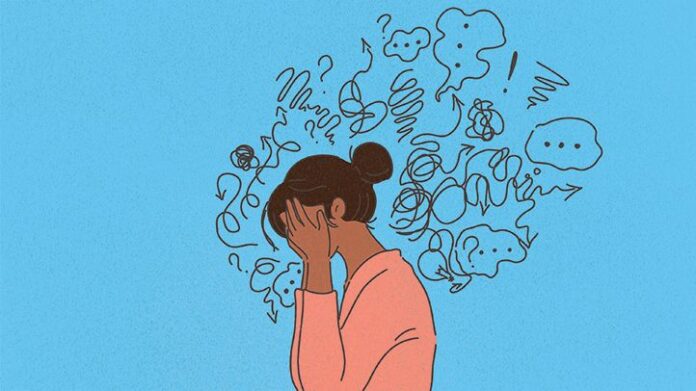Understanding Anxiety Attacks: Signs and Soothing Techniques, can be distressing and overwhelming experiences. Recognising the signs and having strategies to calm oneself during these episodes can make a significant difference. Here’s a comprehensive look at anxiety attack symptoms and some effective calming techniques
Symptoms of Anxiety Attacks
Anxiety attacks can manifest in various ways, and their symptoms might include:
Physical Signs:
-Rapid Heartbeat:A pounding heart or palpitations.
-Shortness of Breath:Feeling breathless or a choking sensation.
-Sweating:Profuse sweating, particularly on the palms or forehead.
-Trembling:Shaking or trembling hands or body.
-Chest Pain:Experiencing chest discomfort or pain.
-Dizziness:Feeling lightheaded or dizzy.
Emotional Signs:
-Intense Fear:A sudden feeling of intense fear or impending doom.
-Detachment:Feeling disconnected from reality or oneself.
-Fear of Losing Control:A sense of losing control or going crazy.
-Overwhelming Anxiety:Feeling extremely anxious or panicky.
-Fear of Death:Dread or fear of dying.
Techniques to Calm Anxiety Attacks
Managing anxiety attacks involves various relaxation techniques and coping strategies:
1. Controlled Breathing:
-Deep Breathing:Inhale deeply through your nose for a count of four, hold for a moment, then exhale slowly through your mouth for another count of four. Repeat this process.
-4-7-8 Technique:Inhale for a count of four, hold your breath for seven counts, and then exhale slowly for eight counts.
2. Mindfulness and Meditation:
-Grounding Techniques:Focus on your senses. Name five things you can see, four things you can touch, three things you can hear, two things you can smell, and one thing you can taste.
-Mindful Breathing:Concentrate on your breath.Observe breathing pattern.
3. Progressive Muscle Relaxation:
-Tense and Release:Tense different muscle groups for a few seconds, then release them. Move through your body, starting from your toes up to your head.
4. Visualisation:
-Calming Imagery:Picture a serene place or scenario that brings comfort, such as a peaceful beach or a favourite scenic spot.
5. Seek Support:
-Connect:Engage in a conversation with a trusted friend, family member, or therapist. Sharing your feelings can help reduce anxiety.
-Professional Help:Consult a mental health professional for guidance and support.
6. Lifestyle Adjustments:
-Healthy Habits:Maintain a balanced diet, regular exercise, and adequate sleep.
-Stress Management:Engage in stress-relieving activities like yoga, reading, or hobbies you enjoy.
Understanding the symptoms of anxiety attacks and adopting these calming strategies can assist in managing these episodes effectively. If anxiety attacks persist or interfere significantly with daily life, seeking professional help is highly recommended. Learning to recognize triggers and having an arsenal of relaxation techniques at hand can significantly alleviate anxiety and help regain a sense of control during distressing moments.
